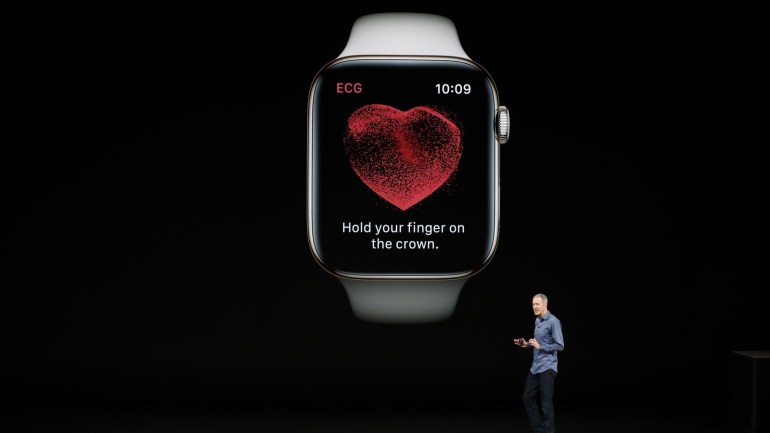Investment in the global healthcare sector in 2020 made a quantum leap, reaching $80.6 billion due to the effects of the Corona pandemic, as stated by the “State of Healthcare” global report published by the CBinsights platform recently.
During the past two years, the public health of humans in particular, and the health care industry in general, has been of such great importance that it has become at the forefront of priorities for various countries of the world, as never before throughout modern history.
As we head into the new year 2022, technologies such as artificial intelligence, wearable devices, and new telehealth systems will play a pivotal role in helping humanity stay healthy and stay healthy.
In this context, Dr. Michael Aragon, chief medical officer of Outset Medical, a manufacturer of medical devices, identified the top 5 global healthcare trends in which technology will decisively impact the next phase, as reported by the platform. TechRepublic recently.
wearable devices
The great development that occurred in the manufacture of wearable devices such as Apple Watch and Fitbit, has made a quantum leap in the possibility of tracking the health of humans from a distance, as the use of these devices has expanded greatly during the past two years, The market has expanded to include a variety of devices that monitor blood pressure, heart rate, temperatures, and healthy sleep quality, all the way to neurological disorders and other diseases and health symptoms.
Aragon stresses that this trend "will continue to grow as people want to have the ability to monitor their health without the need to visit a doctor or go to hospitals," and he expects a qualitative leap in the manufacture and production of these devices during this year.
Dr. Aragon is not the only one who expects significant growth in the wearable devices market, according to a report by Deloitte Global, 320 million wearable health devices will be shipped to consumers worldwide in 2022, and by 2024 this number will reach 440 million units, as more healthcare providers worldwide are recommending these devices to patients.
The great development that occurred in the manufacture of wearable devices, such as “Apple Watches” and “Fitbit”, the latest quantum leap in the ability to track the health of humans remotely (Reuters)
home health care
According to a recent report issued by Grand View Research in September 2021, the global home healthcare market reached $299 billion in 2020, and is expected to grow at a compound annual growth rate of 7.88% until year 2028, and this is a major shift when the growth of this market was no more than 1.64% in 2019 before the pandemic.
"The pandemic has led to an increased demand for home health care equipment with patients, especially those most at risk after being exposed to the virus," Aragon said.
And Aragon does not see this trend going away, as "patients refuse to give up the many benefits of home health care they have experienced during the pandemic."
The home dialysis system is an exemplary example of the usefulness and effectiveness of home health care devices, as it gives patients the option of dialysis in their own homes, without the inconvenience of going to hospitals.
The big role of artificial intelligence
According to recent research by Arizton, the global healthcare artificial intelligence market is expected to reach $44.5 billion by 2026, with a compound annual growth rate of 46.21%.
This increased use of artificial intelligence will be driven by pharmaceutical companies that use technology to advance scientific innovations in the production of new medicines, with the number of patients increasing and the workforce shrinking in various healthcare facilities in the world.
"The use of artificial intelligence greatly reduces human error, whether in the methods of using radiological imaging and immunotherapy for cancer patients, or determining the best treatment for kidney patients, and even locating the spread of the latest infectious diseases around the world," Aragon said.
The global healthcare artificial intelligence market is expected to reach $44.5 billion by 2026 (Reuters)
A visit to the doctor will become a virtual experience
According to experts working at McKinsey & Company, the use of telehealth services during the pandemic has risen dramatically, reaching in April 2020 a level of 78 times higher than it was before the pandemic.
That level has since fallen, but the use of telehealth is still 38 times higher than it was before the pandemic.
Aragon sees this trend continuing.
“Innovation has risen due to the growing interest in telehealth, and it will continue to grow as virtual healthcare models evolve, providing new health services and solutions so that visiting a doctor will soon become a virtual experience for many patients,” Aragon explained.
Equality in health care
Citing statistics showing that different ethnic minorities and dark-skinned people do not have equal access to quality health care compared to white citizens in Western countries, Aragon said, “This is on its way to ending as these imbalances will be re-examined and new technical ways of delivering care will be found. health for all equally, taking into account the cultural and social differences of these minorities.

